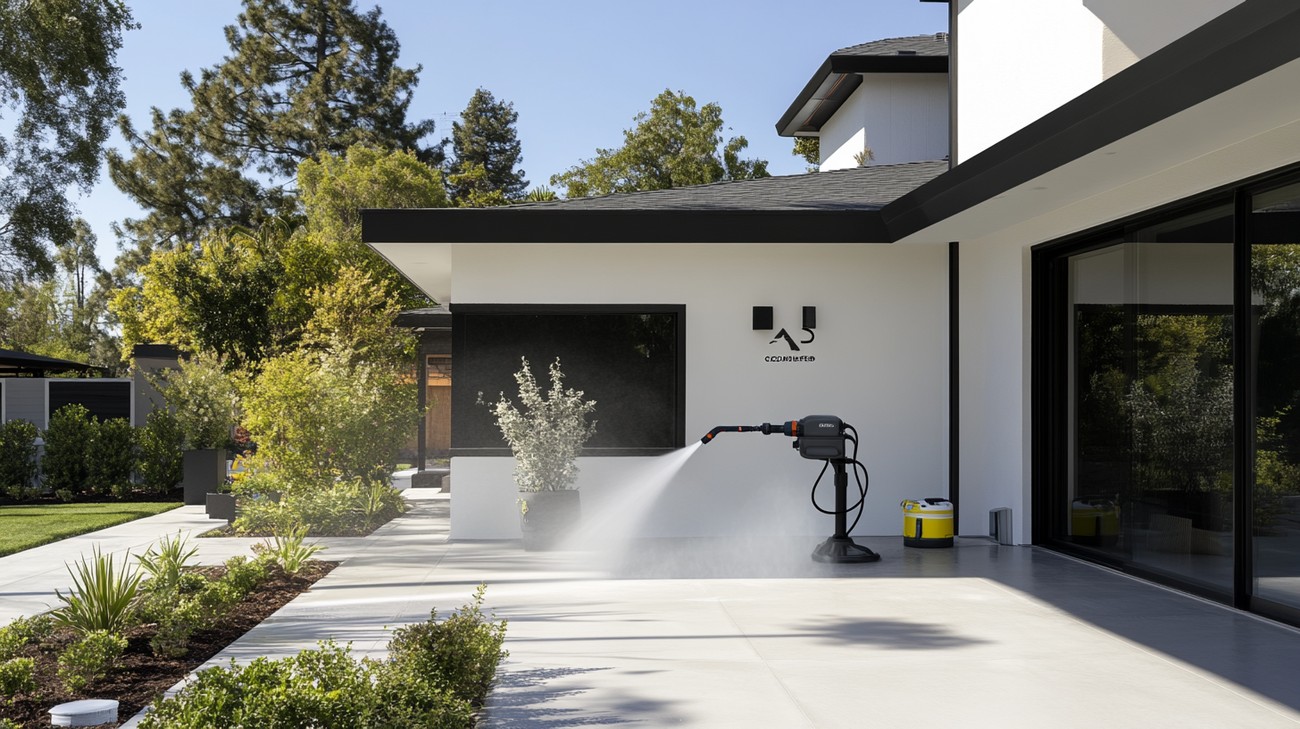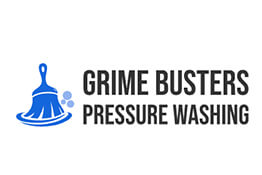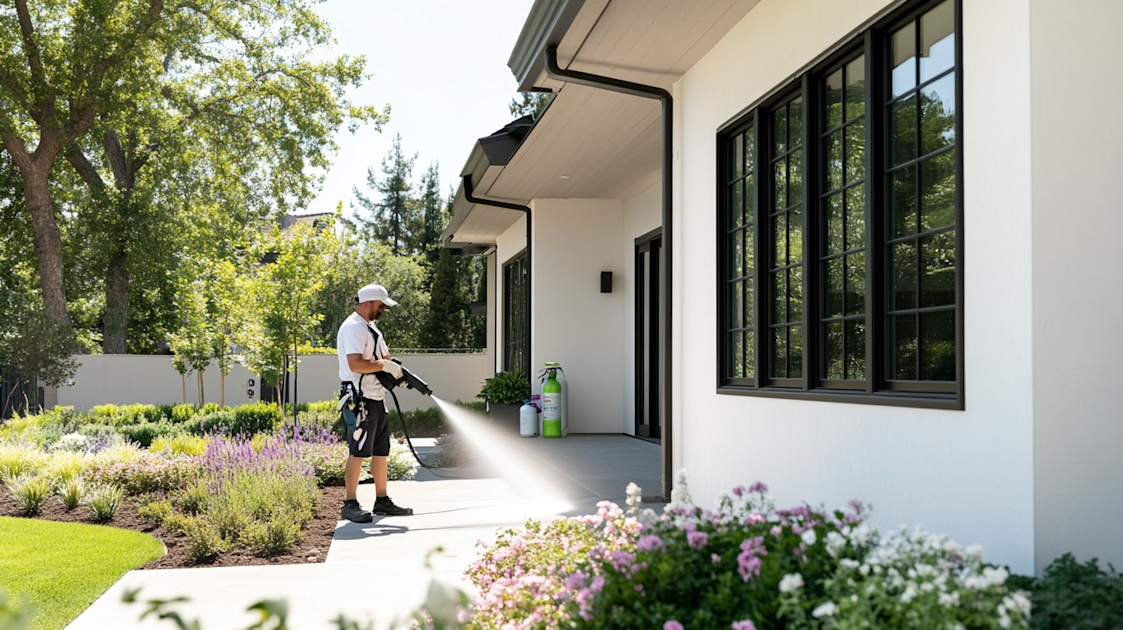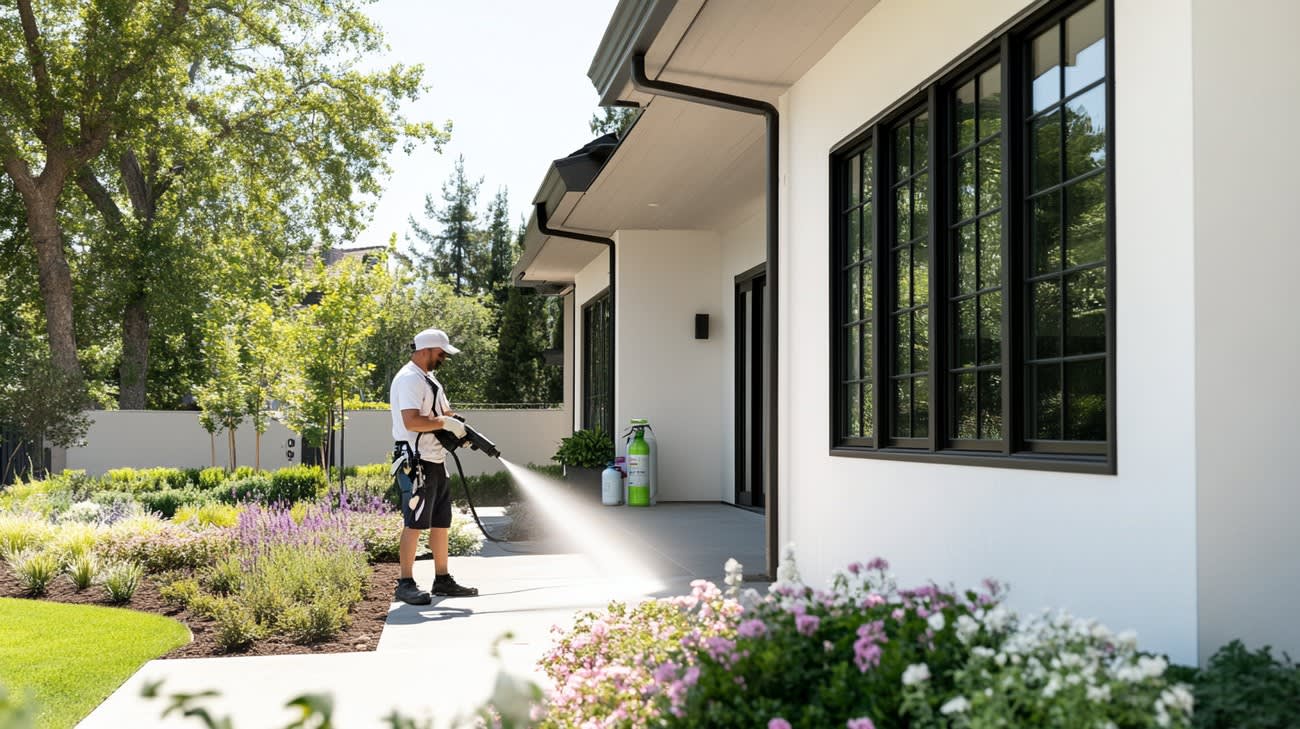Cleaning stucco surfaces doesn't have to be a herculean task. With the right tools and methods, you can achieve a perfectly clean, pristine looking stucco without much hassle. This comprehensive guide will walk you through every step you need to know about how to clean stucco.
What is Stucco?
Stucco is a popular wall finish commonly used in architectural designs and home exteriors. Made from cement, lime, and sand, it provides an appealing textured look to any building. However, like any other surface, stucco requires regular cleaning to preserve its beauty and durability.
Basics to Remember Before Cleaning Stucco
Before diving into the cleaning process, it's essential to remember a few basics:
- Stucco is porous and delicate. Proper handling is paramount.
- Always test-clean a small area first to ensure the cleaning method won't damage the material.
Gather the Necessary Cleaning Materials
To efficiently and effectively clean your stucco, you'll need the following items:
- Garden hose with spray attachment
- Bucket
- Mild dish soap
- Soft-bristle brush or broom
- Protective gloves and eyewear
Step-by-Step Guide on How to Clean Stucco
1. Prepare the Stucco Surface
Before you start the actual cleaning process, it's crucial to prepare your stucco surface. Here's how to do it:
- Remove any loose debris such as twigs or dirt using a soft brush
- Wet the stucco surface with a garden hose to prevent the soap solution from soaking in too quickly
2. Create Your Stucco Cleaning Solution
In a large bucket, mix warm water and mild dish soap. The ratio should be about one-fourth-cup soap to each gallon of water.
3. Apply the Cleaning Solution
Dip your soft-bristle brush or broom into the soap mixture, then gently scrub your stucco surface in a circular motion. Work from top to bottom to prevent streaking.
4. Rinse the Stucco Surface
Thoroughly rinse the soapy water off the wall with your garden hose. Make sure to remove all soap residues to prevent any build-up.
5. Dry the Stucco Surface
Allow the stucco to air dry. It may take several hours to days depending on the weather.
Dealing with Stubborn Stains on Stucco
For tough stains, a bit of extra care is needed. Below are some solutions:
- Organic stains: A mixture of water and bleach (ratio 10:1) should do the trick.
- Oil-based stains: Use a degreaser, then rinse thoroughly.
- Mildew or Mold: Use a solution of warm water, mild dish soap, and bleach in a 1:1:10 ratio.
- Rust stains: Products specially made for calcium, lime, and rust removal are available in the market.
Always remember to test a small area first when using these solutions.
How Often Should You Clean Stucco?
Depending on your local weather and stucco's exposure to dirt or stains, it is generally recommended to clean stucco at least once a year. Regular maintenance will prolong the life of your stucco and keep it looking its best.

Frequently Asked Questions about How To Clean Stucco
What equipment do I need to clean stucco?
You will need a garden hose, soft-bristled brush, and a ladder for hard-to-reach areas. If your stucco wall has some stubborn stains, you might also need a pressure washer. However, be extremely cautious when handling pressure washers, as an incorrect usage can damage the stucco wall.
Can I use a pressure washer to clean stucco?
Yes, you can use a pressure washer to clean stucco. However, it's important to note that if the pressure is set too high or if you spray the water at a wrong angle, you can potentially damage the stucco. Therefore, if you're not experienced with using a pressure washer, consider hiring a professional cleaner.
What cleaning solutions are safe for stucco?
There are many cleaning solutions available that are safe for stucco. Mild detergent mixed with water is a popular choice to clean light dirt. For tougher stains, you can use a mix of bleach and water. Remember to dilute the bleach, as too much can discolor or damage the stucco.
Can I clean stucco with vinegar?
Yes, vinegar can be an effective cleaner for stucco. It's particularly useful for removing efflorescence (salt deposits) that can form on stucco. A 50/50 mix of vinegar and water should do the trick. However, vinegar is a mild acid and should therefore be used sparingly.
Is there a specific technique to clean stucco?
When you’re cleaning stucco, always start from the bottom and work your way up. This helps avoid streaking and ensures a more thorough clean. If you're using a brush, remember to use gentle, circular motions to prevent any damage to the stucco.
Can I use bleach to clean mold off of my stucco?
Yes, bleach can be used to kill and clean mold off stucco. You can create a solution by combining one part bleach to four parts water. Make sure to properly rinse the area afterward to get rid of any leftover bleach as it can discolor the stucco.

Pros of Cleaning Stucco
Enhances Aesthetic Appeal
Maintaining clean stucco can significantly improve the aesthetic appeal of your home or building. Stucco is available in a variety of colors and textures, all of which can be better appreciated when the surface is clean. Grime, dirt, and discoloration can hide the unique features of stucco, making it look dull and unappealing. Regular cleaning helps to maintain its vibrant look and enhances curb appeal.
Increases Lifespan
Everyday dirt, pollution, and weathering can cause the stucco to degrade over time. Algae, mold, and mildew can also grow on stucco, especially in damp conditions, causing the stucco to deteriorate faster. Therefore, regular cleaning not only keeps the stucco looking attractive but also extends its lifespan by preventing premature wear and tear.
Identification of Damages
Cleaning stucco also serves as an opportunity to identify minor damages before they worsen. Inspecting the stucco surface for cracks, chips, or discoloration during cleaning can help detect issues early. This allows for timely repairs and maintenance, preserving the integrity of the stucco.
Increases Property Value
With clean and well-kept stucco, the value of your property is likely to go up. Prospective buyers often appreciate well-maintained properties, and clean stucco is a sign that the property has been well taken care of. As such, this could attract more better offers if you decide to sell your property.
Cons of Cleaning Stucco
Potential for Damage
Stucco is a durable material, but harsh cleaning methods can potentially create damage. High-pressure power washing, for example, can dislodge stucco particles, causing pitting or even breaking off larger pieces. The use of aggressive cleaning agents might also discolor or deteriorate the stucco surface. Hence, gentle cleaning methods are often preferred over powerful ones to prevent unwanted damage.
Requires Some Skill and Knowledge
While some may venture into Do-It-Yourself (DIY) stucco cleaning, it does require some skill and knowledge. The type of stains on the stucco determine what cleaning agents to use. Knowing the right technique and pressure for power washing isn't always straightforward. A professional cleaner might be better equipped to handle such decisions.
Can Be Time-Consuming
Depending on the size of the area covered by stucco, cleaning might take a significant amount of time. This is especially true when gentle cleaning methods are used. Power washing can clean a larger area faster, but as mentioned above, it can also lead to potential damage if not done properly.
Cost Factor
If you hire a professional cleaner, you'll obviously incur some cost. The expense might shift depending on the size of the area to be cleaned, the type of stains present, and the cleaning methods used. While the cost of hiring a professional to clean your stucco might seem high, bear in mind that it might still be cheaper than repairing or replacing damaged stucco.

Myths and Misconceptions About Cleaning Stucco
Cleaning stucco carries with it a fair share of misconceptions and myths. Many homeowners believe these myths and as a result, they unknowingly damage their stucco. Here, we jump into some of the most common myths and misconceptions about cleaning stucco and straighten out facts from fictions.
Myth 1: Stucco doesn’t need regular cleaning
Perhaps the first, and most common, misconception that homeowners have is that stucco doesn’t need regular cleaning. The semi-rough texture of the stucco wall might lead people to think that dirt and grime are less likely to stick on it. However, just like any exterior wall surface, stucco will accumulate dirt, dust, and mold over time, which not only affects its visual appeal but may also degrade its quality. Regular cleaning is critical to maintaining the stucco's integrity and curb appeal.
Myth 2: Power washing is the best method to clean stucco
Another popular myth is that power washing is the ideal cleaning method for stucco surfaces. While power washing can indeed remove dirt and grime from the stucco, it should be done with caution. Excessive pressure can damage the surface, causing cracks and chips and allowing moisture to creep in. Instead, soft washing or hand washing with mild detergents is recommended to protect the surface while ensuring a thorough cleaning.
Myth 3: You can use any cleaning solution on stucco
This myth carries potential harmful implications for the stucco surface. Not all cleaning solutions are safe to use on stucco. Despite its tough exterior, stucco is actually quite a delicate material. Harsh acids, bleach, and other aggressive cleaners can deteriorate the surface and alter its original color. When choosing a cleaning solution, it is recommended to choose pH neutral and biodegradable cleaners. It's always advisable to test a small, inconspicuous area first to make sure the cleaner does not discolor or damage the stucco.
Myth 4: DIY stucco cleaning is as effective as professional cleaning
While DIY stucco cleaning can help maintain its appearance, it may not be as effective as professional cleaning. This is due to several factors. Professionals have access to specific cleaners that effectively remove stains. They also have training and experience to clean without causing damage. Furthermore, professional stucco cleaners will also ideally know how to inspect stucco for other issues such as cracks or water damage. While DIY cleaning is a good practice, hiring experts periodically can help ensure the longevity of your stucco.
Myth 5: Sealed stucco doesn't need cleaning
Just because your stucco is sealed doesn't mean it's immune to dirt, dust, or grime. Sealed or not, stucco is subjected to the same environmental factors such as weather changes and pollution that can soil its surface. Sealing helps protect the stucco from moisture absorption, but it doesn't make it dirt-proof. Regular cleaning is equally important for both sealed and unsealed stucco to maintain their appearance and structural integrity.
Myth 6: Stucco can't be cleaned in all weather conditions
Some believe that stucco can’t be cleaned during certain weather conditions, particularly during the cold or rainy seasons. While it’s true that water-based cleaning methods may not be ideal in freezing temperatures or heavy rain, it doesn't mean stucco can't be cleaned during these periods. You can consider other cleaning methods such as dry dusting and spot cleaning with mild detergent. It’s also worth mentioning that as a weather-resistant material, stucco can withstand cleaning in various weather conditions with proper technique.
By understanding these myths, you can ensure that your stucco cleaning process is effective and safe, preserving the life and enhances the beauty of your stucco exterior. The next time you set out to clean your stucco, remember these misconceptions and ignore them for the benefit of your home's exterior.
Summary
So, there you have it, the basics of how to clean stucco. Remember, the key to a squeaky-clean surface lies in selecting the right cleaner for the type of dirt you're dealing with. And of course, patience is a virtue. You can't rush the cleaning process if you want a spick and span exterior. Go easy on your stucco; prevent any potential damage by using gentle scrubbing techniques. Now, you are equipped to handle your stucco maintenance with confidence.
But cleaning is just half of the story. After you've mastered how to clean stucco, don't forget about preventive maintenance. Dealing with dirt and grime as soon as it appears can save you a lot of scrubbing in the long run. So, be sure to regularly inspect your stucco surfaces for signs of dirt accumulation. By adhering to these tips, your stucco can continue to look fresh and vibrant for years to come.
Lastly, while knowing how to clean stucco is handy, don't hesitate to call in the professionals if the task seems too daunting. Remember that an improperly cleaned stucco surface can lead to a myriad of problems in the long run, including water infiltration and premature degradation. So, whenever in doubt, turn to the pros. Their expertise will ensure that your stucco surfaces stay clean, vibrant, and damage-free, significantly elevating both the aesthetic value and durability of your home.
About Atlas Stucco
Welcome to Atlas Stucco of Sacramento, CA! We are your go-to professional stucco contractors specializing in residential and commercial stucco services. Proudly serving Sacramento and the surrounding areas for many years now, we've built a successful reputation for delivering top-quality services with a friendly and professional touch. At Atlas Stucco, we take pride in our craftsmanship, our clients' satisfaction is our numero-uno priority. So whether you are building a new home or revitalizing an old property, you can count on our team of experienced and dedicated professionals for exceptional stucco work that will make your property the envy of the neighborhood.
Tags: cleaning, stucco, maintenance,








